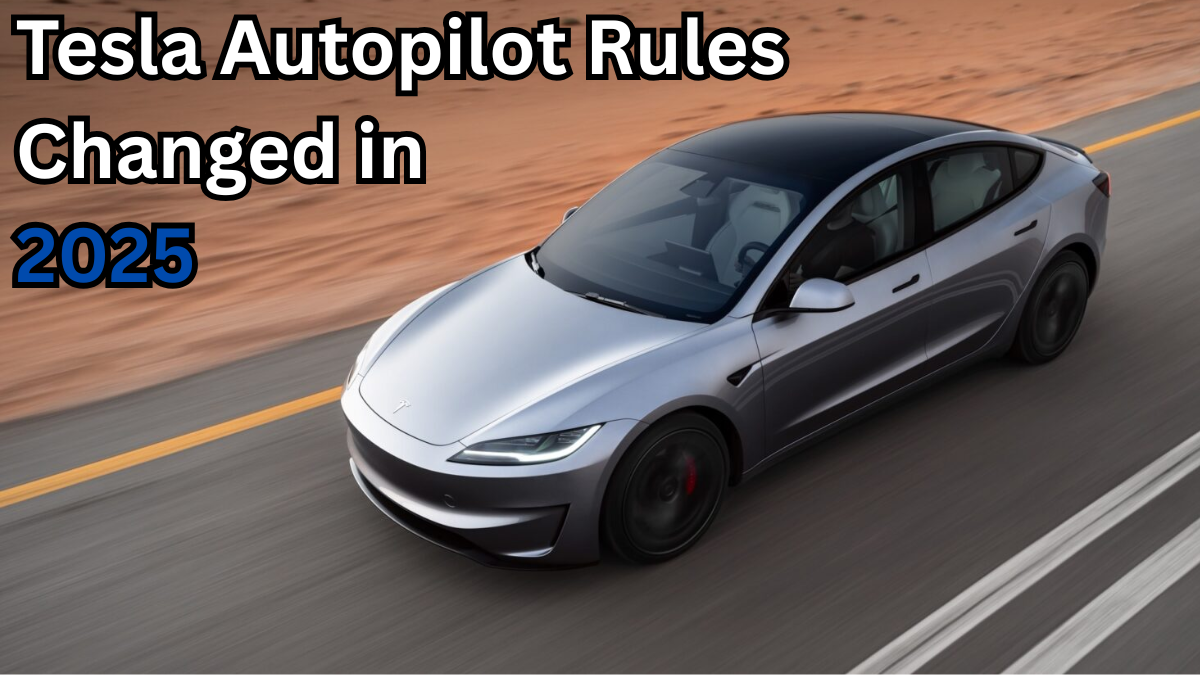Tesla drivers and self-driving enthusiasts in the US have a new update to keep on their radar. The Tesla Autopilot Regulation Update for 2025 brings some significant changes to how Tesla’s autonomous driving features can be used on American roads. If you’re curious about how these changes impact you — whether you’re an everyday Tesla owner or just following the latest Tesla news USA — here’s what you need to know.

What’s New in the 2025 Tesla Autopilot Regulation Update?
Starting in 2025, federal and state regulators have introduced stricter guidelines on Tesla’s Autopilot system. The goal is to enhance safety while maintaining innovation in self-driving technology.
Key Changes Include:
-
Enhanced Driver Monitoring: Tesla must upgrade its driver monitoring systems to ensure the driver remains attentive, even when Autopilot is engaged.
-
Speed Restrictions: Autopilot will have new speed caps in certain urban and high-risk areas.
-
Reporting Requirements: Tesla is now required to report data more frequently on Autopilot’s performance and incidents.
-
Restricted Use in Some States: Certain states may impose additional local restrictions or bans on Autopilot depending on road safety statistics.
How These Changes Affect Tesla Drivers
For Tesla owners, these updates might feel like a slight shift in the convenience they’ve come to expect. But they’re designed to keep everyone safer.
What to Expect Behind the Wheel:
-
More frequent prompts reminding you to keep your hands on the wheel.
-
Possible deactivation of Autopilot in specific zones where speed or traffic conditions don’t meet the new guidelines.
-
Tesla software updates pushing these new features directly to your vehicle.
Quick Overview: Tesla Autopilot Regulation Update 2025
| Aspect | Old Regulation | New Regulation (2025) |
|---|---|---|
| Driver Monitoring | Basic attention alerts | Advanced eye-tracking and alert system |
| Speed Limits on Autopilot | No specific speed restrictions | Speed caps in urban/high-risk areas |
| Data Reporting | Periodic internal reporting | More frequent, mandatory data submissions |
| State Restrictions | Few state-level limitations | Some states impose stricter local rules |
Why This Update Matters in the Bigger Picture
The rise of self-driving laws is a hot topic across the US, with safety concerns and innovation often at odds. This Tesla Autopilot Regulation Update signals a move toward more accountability and trust in autonomous tech. For drivers, it’s a reminder that while Tesla’s technology is cutting-edge, it still needs a human touch behind the wheel.
FAQs
Q1: Will this update make Tesla’s Autopilot less convenient?
Not necessarily. While some restrictions will limit full Autopilot freedom in certain areas, the system’s core convenience remains intact. The updates are designed to improve safety without compromising functionality.
Q2: Do other car manufacturers face similar regulations?
Yes. The US government is developing broader self-driving laws that apply to all autonomous vehicle makers, but Tesla is often in the spotlight due to its popularity and advanced features.
Q3: How can Tesla drivers prepare for these changes?
Drivers should keep their vehicle software up to date, stay informed about state-specific rules, and always stay attentive while using Autopilot.
Q4: Where can I find the latest Tesla news USA on self-driving laws?
Reliable sources include the National Highway Traffic Safety Administration (NHTSA) website, Tesla’s official updates, and trusted automotive news outlets.
Tesla’s journey toward full autonomy is ongoing, and these new rules are just one step in a complex road ahead. For US drivers, staying informed about the Tesla Autopilot Regulation Update means safer driving and a better understanding of how technology and legislation evolve together.
Click here to learn more
